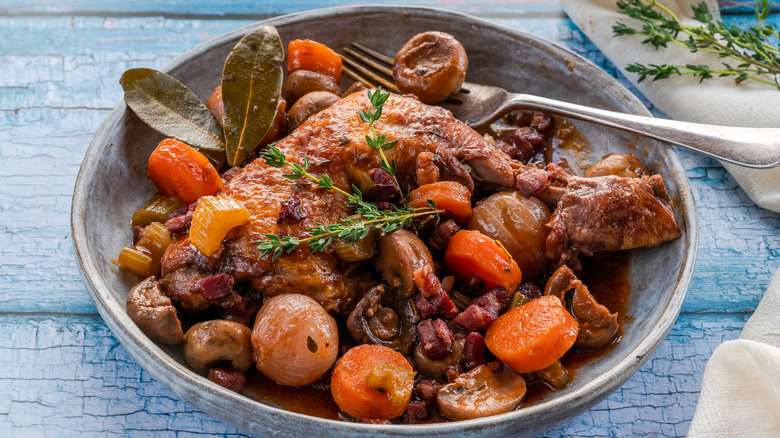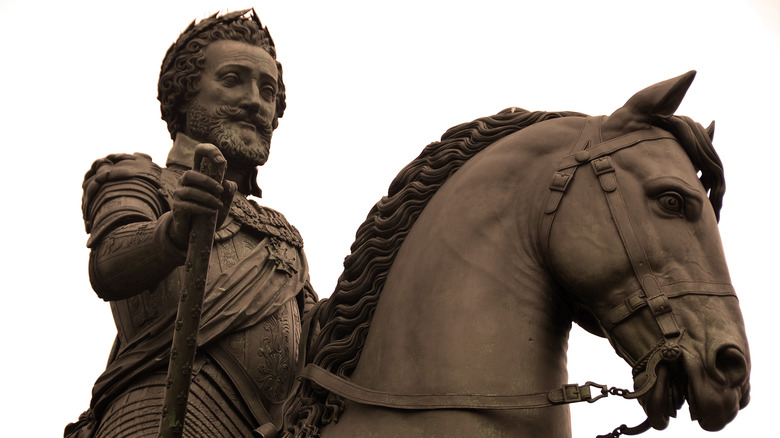How King Henri IV Is Related To Coq-Au-Vin
French cuisine carries a posh reputation, undoubtedly earned by world-renowned chefs and elegant restaurants. Even the name "coq-au-vin" makes you want to spread out a white tablecloth and pop the cork on a special-occasion wine.
But, just because French is a Romance language, per Britannica, doesn't mean every French dish gets an ooh la la in culinary circles. That was likely the case with original coq-au-vin concoctions.
So, what exactly is the lovely sounding French dish coq-au-vin, and what does it have to do with the French monarchy? Translated as "rooster in wine," the name is pretty self-explanatory. Traditionally, the poultry is soaked in Burgundy wine and braised, explains Fine Dining Lovers, though the region of Alsace favors Riesling.
The secret is low heat and slow cooking, starting with chicken browned with a sautéed mixture of butter, onions, and fresh garlic, typically followed by mushrooms, vegetables, spices, and lardons (which are thinly sliced "matchstick style" strips of slab bacon), per Bon Appétit.
The name itself gives insight into the origins of coq-au-vin. While today's chefs use chicken, the French word "coq," which means rooster, indicates humble beginnings. Rooster meat is tougher and less expensive than chicken — and that's where the royal connection comes into play.
A phrase for culinary posterity
"Let them eat cake!" We all know the infamous proclamation attributed to Queen of France Marie-Antoinette around 1789, per History.
But another royal phrase, reportedly uttered many years earlier by King Henri IV, had an equal impact on French culinary and political history, albeit in a more positive way. "A chicken in every pot" was the king's political statement, wishing that all people in France, particularly peasants and workers, would live in prosperity, according to Britannica.
Some believe that the quote inspired the creation of coq-au-vin, explains Fine Dining Lovers, which is essentially chicken stew in a pot — plus wine, of course.
The first known recipe for the current-day version of coq-au-vin appeared in "Cookery for English Households," an 1864 English cookbook, notes Fine Dining Lovers. Instead of rooster and burgundy, the name indicated white wine and chicken: poulet au vin blanc.
But the real popularity of coq-au-vin arose from early celebrity chef Julia Child, a huge advocate of French cuisine. Thanks to her cookbook and related TV show "The French Chef," coq-au-vin found its place in modern American cookery.

